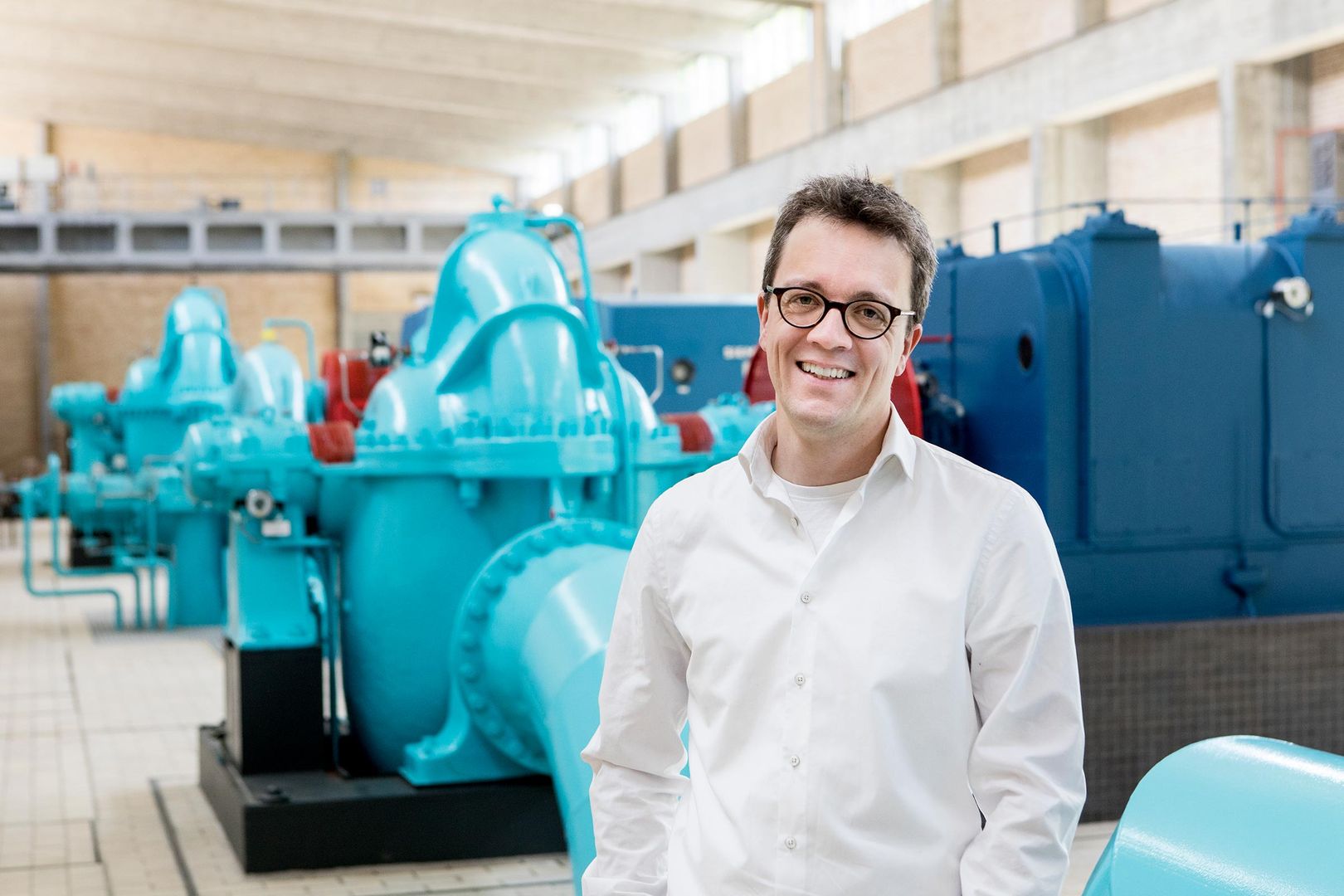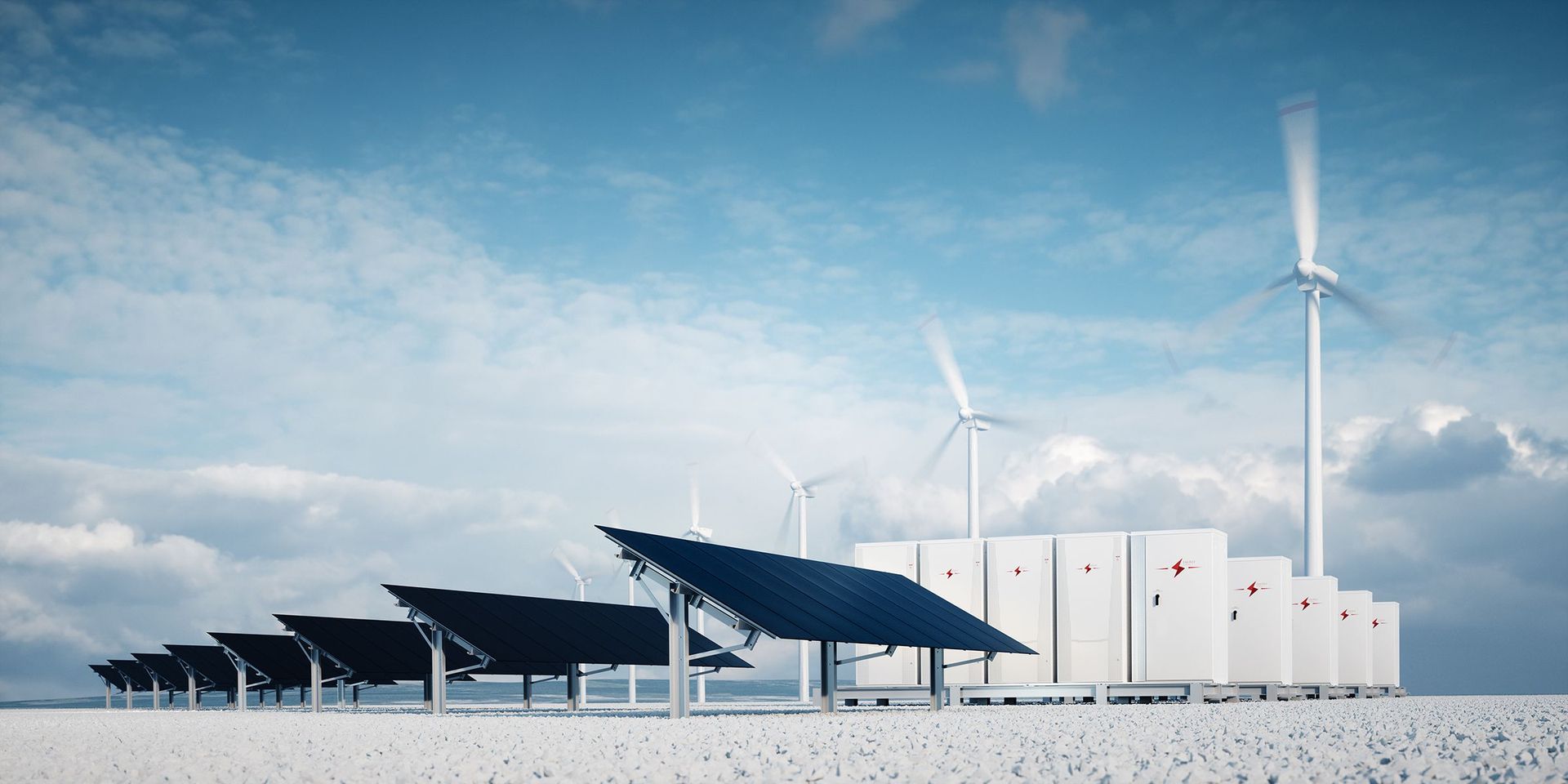Water for millions
A small, winding road leads from Ludwigshafen at Lake Constance through a dense deciduous forest to Sipplinger Berg. Its plateau, with a wide view over the Swabian Sea to the Alps, is covered by the huge and yet almost invisibly embedded treatment plant of the Zweckverband Bodensee Wasserversorgung, the largest regional watter supplier. Together with the Süßenmühle lake pumping station, which pumps raw water from Lake Constance 310 meters below up to the mountain top, the plant is the largest waterworks in Germany.
Table of Contents

Christoph Drusenbaum, engineer in the production and treatment plant, is responsible for energy procurement at the Swabian water supplier. The electricity he purchases feeds the total of 54 megawatts of installed pumping capacity at the Sipplingen site, which produces an average of 356,000 cubic metres of untreated water per day from Lake Constance.
After treatment with microfilters, ozonation and a sand filter system, the Lake Constance water reaches the storage tanks of the waterworks and from there the consumers in Stuttgart and the whole of Baden-Württemberg. With an annual consumption of 150 gigawatt hours of electricity, mainly for pumping, energy procurement has a special role. As an engineer with a focus on renewable energies, Christoph Drusenbaum is therefore continuously looking for ways to improve energy and cost efficiency and has found these in the flexible electricity tariffs at Next Kraftwerke.
Since 2016, Next Kraftwerke has been offering a variable electricity supply contract with the product "Best of 96", which makes the price fluctuations on the electricity exchange directly usable for industrial and commercial customers. They can shift their consumption processes from expensive to cheaper time zones of the day to the nearest quarter of an hour.
"We can save a six-digit amount of electricity costs annually through these optimizations in electricity procurement", Christoph Drusenbaum is pleased to report, but emphasizes: "With electricity procurement costs totaling roughly 20 million euros per year, this is of course only a single-digit percentage share. However, we are quite satisfied with the results of our cooperation".
To adjust consumption, the four 8 MW pumps and the two 11 MW pumps can be switched on or off. "It should of course be noted that the number of switching operations is limited. To start a pump, the centrifugal masses of several tons from the pumps must be set in motion." explains Christoph Drusenbaum.
The engineer appreciates the trouble-free communication with the specialists at Next Kraftwerke: "I find the atmosphere very pleasant and pragmatic - furthermore due to the balanced contract design with the profit share model of the time-of-use tariff. Also the support in the technical design and setup of the communication via the REST-API interface was very helpful". Next Kraftwerke transmits the electricity prices to the waterworks via the REST-API, while the waterworks sends its timetable back to the virtual power plant via the same route.
Thus not only the engineer, but also the water supplier is content: Lower electricity procurement costs mean more money for infrastructure and the expansion of the renewable power supply of the pumping station for four million water consumers in Baden-Württemberg.
Facts & Figures
| Installed capacity of the Süßenmühle pumping station: | 55 MW |
| Flexibility provided: | 32 MW |
| Average power consumption of pumps per year: | 150.000 MWh |
| Pipe length: | more than 1.700 km |
| Homepage: | Homepage of the Zweckverband Bodensee-Wasserversorgung |
| Applied product: | Quarter-hourly time of use tariff Best of 96 |


